
Updated September, 2024
The jewel in the crown of Romanian climbing, Băile Herculane holds a dear place in the hearts of local climbers. Spectacular crags, quality limestone, good friction, picturesque landscapes, authenticity, and thermal baths to recover after a projecting (or send) day, all of these come with the package.
For us, spring and autumn trips to Herculane are pilgrimages we look forward to – time away dedicated to climbing, disconnecting, slowing down, sleeping in our tent, barbecuing every night, falling asleep next to the campfire…oh, the simple life! Băile Herculane sure treats us dirtbags well.
Dirtbag or not, if you’re planning to climb in Romania for the first time, Băile Herculane and the adjacent Cerna Valley are must-see destinations. So read on and find out all you need to have yourself an epic trip!
In this article
Băile Herculane in a nutshell

Short history of Băile Herculane
Tucked away in southwestern Romania, close to the Danube, Băile Herculane (Herculean Baths) is the oldest thermal spa resort in Romania and in the whole of south-eastern Europe as a matter of fact. It dates back to Roman times, when Roman baths were built for both the nobility and the common folk. The resort quickly became widely known throughout the empire.
Fast forward to the 18th century when the Austro-Hungarian Empire decided to build over the old Roman baths, that was Băile Herculane’s heyday. In the 19th century, it became Europe’s most renowned thermal spa resort, welcoming emperors, empresses, kings, queens, and notable people of the time.
In the 1970s, the resort experienced yet another growth, as large hotels and spa centers where built, attracting both local and international tourists, thus gaining a lot of popularity.
Sadly, the 1990s saw Băile Herculane’s downfall. Investments and interest decreased, and most of its once glamorous historical buildings where left in ruins. The bronze statue of Hercules, in the historical center of the resort, stands tall as the emblem of the resort, surrounded by old buildings now covered in rust and mold, roofs half collapsed, intricate architectural details still showing here and there, reminding of its former glory. It is a sad sight to behold…
Thermal baths and natural sights
Despite the rather depressing state it finds itself these days, Băile Herculane remains the most important thermal spa resort in Romania. Surrounded by steep, rocky slopes that seem to almost close in on it, it truly is an impressive place. And while many of its historical buildings have been left to rot, its natural resources have not yet withered.
Băile Herculane’s true value lies in its thermal springs, air with high concentration of negative ions (usually found over 2,000 m while the resort sits at 170 m), and surrounding landscapes.

Image credit: Color Drops Mandala
The resort is within Valea Cernei-Domogled National Park, the second biggest in the country, with spectacular landscapes, karst features, isolated settlements, caves, gorges, waterfalls, serene meadows, as well as rich flora and fauna. Speaking of flora, the black pine trees clinging onto the rocky slopes all along the Cerna Valley are emblematic of the area.
Getting around
There are several smaller supermarkets in Băile Herculane, as well as a larger one – Penny Market. There are plenty of restaurants. You can find farmers and locals selling home-grown produce on the side of the road in the town center. All in all, you can find all the basics. For more options, head to the nearby cities of Orşova or Drobeta Turnu-Severin.
For drinking water, you can fill your bottles in town at Domogled Spring – location here. There are a couple of freshwater springs on the Cerna Valley, on the right as you drive up to Vânturătoarea Waterfall. There are springs at the Dumbrava campsite, too.
It’s best to have a car to move around. There are some sectors close to town, and it is possible to walk to them if you are staying in Băile Herculane, but if you want to climb on the Cerna Valley, you absolutely need a car.
Now onto the climbing…
Best time to climb near Băile Herculane and on the Cerna Valley

The crags around Băile Herculane and on the Cerna Valley are are best in spring and autumn. Overall, the best months for climbing in Băile Herculane are May-June and September-October. Due to the sub-Mediterranean climate in the area, summers tend to be too hot for climbing. During warm winter days, as well as in early spring or late autumn, it is possible to climb at the some of the sunnier sectors close to town.
Where to climb in Băile Herculane?

The 2014 Petzl Rock Trip helped strengthen Băile Herculane’s position as one of Romania’s most iconic climbing destinations. Then, in 2018, Adam Ondra visited the impressive Vânturătoarea Waterfall, calling it the “wall of perfection”, and climbed Romania’s first 9a+, Stone Butterfly. Needless to say, the potential here is high.
Herculane Climbing Open (HCO), the biggest rock climbing festival in Romania, has been around since 2002. The event is an opportunity to open new crags, bolt new lines, rebolt older routes, and revive less-frequented sectors. It’s a must for local climbers, but many foreign climbers join in as well.
There is a small printed guidebook for Băile Herculane, rather like a leaflet, that is available for purchase at Pensiunea Magic in town. Unfortunately, the guidebook for Băile Herculane is not available online right now. Thecrag.com does have information on the sectors and you can get by with their topos. Do keep in mind, though, that new routes are still being bolted and some of the sectors may not be updated. If you travel during peak climbing season, chances are you’ll find local climbers at the crags that’ll be happy to offer more information.
The climbing is scattered near town as well as on the Cerna Valley. Of course, this means lots of variety, as each crag has its own personality.
There are 700+ sport climbing routes, the bulk in the 6a to 8a range. Overall, the climbing is on quality gray limestone, from slabs to overhangs and everything in between. I’d say what best describes the climbing here is “demanding” – athletic, technical, powerful, with interesting cruxes. There are lots of easy routes, too, making the area suitable for all levels, from first-timers to climbers looking for tough projects and even first ascents.
Climbing sectors in Băile Herculane

Here are some of the most popular climbing sectors in Băile Herculane:
Cariera (The Quarry) is one of the largest crags near Băile Herculane, with several sectors and routes for all levels – topo here. The approach takes 15 to 20 minutes on a path leading up to the mountain. Most of the routes are in the 5a to 6c+ range, making this a great playground for beginners. There are some interesting hard routes, too. This area doesn’t get much traffic.

Pecinişca Gorges was the location of the 2002, 2022, and 2023 Herculane Climbing Open (HCO), and is one of the oldest crags in the area – topo here.
Above Hotel Roman, Faleza (The Crag) has a handful of routes, but pretty much each of them is impressive in its own tight. It gets a lot of sun and is a good choice on cooler days – topo here.
Also close to Hotel Roman, Surplomba (The Overhang) takes about 5-10 minutes to reach from the road. Just as the name suggests, most of the routes at this sector are overhanging. There are some iconic routes here, with interesting features on gray limestone, some tufas, and great friction – topo here.
As you exit town driving up on the Cerna Valley, Magnolia is another crag with a variety of routes, many in the 6a to 6c range, great for getting some mileage. There are some challenging, overhanging lines as well – topo here.

There are quite a few notable crags along the Cerna Valley:
KM 9 gets its name from the milestone showing 9 km to Băile Herculane on its backside (due to road work right now, the milestone is currently not visible) . The approach takes 10-15 minutes on a path through the forest. This is an iconic crag with some of the most demanding routes in the area, mostly on vertical or slightly overhanging faces, on solid gray limestone, with great friction, small holds, and puzzling cruxes. Most of the routes are in the 7a to 8a range, with some harder ones around 8a+ to 8b range, as well as projects. There are easier routes, too, so everyone can have a good time at this crag (or get their ass kicked) – topo here.
Next on the valley, KM 10 gets its name from the milestone showing 10 km to Băile Herculane on its backside (same as KM 9, because of road work, the milestone is currently not visible). This is a smaller, intimate sector with a variety of routes on gray limestone, vertical and slightly overhanging. The approach takes 20-30 minutes on a picturesque, winding path – topo here.

About 11 km from Băile Herculane on the Cerna Valley, there’s a bridge on the left over the river, at the tail of the Prisaca Lake. From there, a 45-minute to one-hour hike takes you to Vânturătoarea Waterfall, perhaps the most popular climbing destination in Romania. This sector, the largest in the area, deserves a section of its own, and you can scroll to it below.
Ţâsna is about 12 kilometers from Băile Herculane, above Dumbrava Motel. The approach takes 25 to 40 minutes, depending on which path you take – there’s a steeper path and an easier detour. Once there, you’ll be greeted by technical vertical faces and slabs with sharp crimps and small footholds; gotta love it! The solid limestone here has routes of all grades – topo here.
KM 20, located 20 km from Băile Herculane, is close to the road, across the Cerna River. It is a smaller crag with four separate sectors – two are dedicated to beginners, the third has short, hard, and bouldery routes, and the fourth has long routes, some of them with two pitches – topo here.
Bobot Gorges (Cheile Bobot) is about 25 kilometers from Băile Herculane and has several sectors, some next to the road while others require a 15-minute approach. You’ll find a wide variety of routes, from slabs to overhangs, and from short and bouldery to long and pumpy – topo here.
Vânturătoarea Waterfall – the star of the show

Home to some of Romania’s hardest sport climbing routes, Vânturătoarea Waterfall is an iconic climbing destination. The place itself is impressive, to say the least. It still gives me goose bumps every time.
A large waterfall, about 50 meters tall, divides a huge chunk of rock in two. There are routes on each side of the waterfall, on brownish limestone with gray and black stripes, vertical and overhanging, with pockets, crimps, slopers, you name it! Overall, friction is pretty good on all the lines. There are 100+ routes, with potential for more.
This is where you’ll find Stone Butterfly (9a+), Romania’s hardest (climbed) route to date. There are also several very aesthetic and demanding lines in the 8b to 8c+ range. You’ll find easy routes as well, in the 5a to 6c range, making Vânturătoarea Waterfall a great destination for everyone, beginners to hardcore climbers. There are still a few projects awaiting their first ascent.
To get here, drive about 11 km from Băile Herculane on the Cerna Valley. At the end of the lake, at the river mouth, park near the bridge. The path begins just across the river, next to a house, and the hike takes about 45 minutes to one hour.
Click here for the climbing topo from thecrag.com.
What to pack
Bring your entire climbing gear. There are no climbing stores in Băile Herculane, so make sure you have everything you need, plenty of chalk included.
If you plan to climb at Vânturătoarea Waterfall, you’ll need a 70-meter rope at the very least. Bring 20+ quickdraws. Make sure you pack layers as the temps at the crags on the Cerna Valley are lower than in town. The weather on the valley can change unpredictably and the forecast isn’t always accurate in these parts, so best be prepared for all scenarios.
Getting there
Most climbers prefer to fly into Bucharest International Airport (OTP), Timişoara (TSR), or Arad (ARW) and rent a car from there. It’s a 5 to 6-hour drive from Bucharest to Băile Herculane, 2 ½ to 3 hours from Timişoara, and about 3 hours from Arad.
You can get to Băile Herculane by train. But from there, you’re limited to the sectors next to town. If you wish to go to the climbing sectors on the Cerna Valley, Vânturătoarea Waterfall included, you do need a car.
Where to stay

Accommodation
Băile Herculane is the most popular spa resort in Romania. There are plenty of hotels and guesthouses, Airbnbs as well. There are some accommodation options on the Cerna Valley, too, if you want to be closer to the crags and farther away from town.
Since the area lies within a national park, camping is not allowed outside the designated campgrounds, but there are cheap camping places for dirtbags and parking lots for converted vans or camper vans.
Camping
The favorite camping place among climbers has to be Dumbrava (“grove” in Romanian). The place is located 12 kilometers from Băile Herculane on the Cerna Valley – location here. You can pitch your tent in a picturesque family-owned meadow for a small fee. There are no amenities except for a small toilet, a fence, and some garbage cans, but to me, it does its job quite well.
Near the camping place there are two hotels that also have restaurants. There are freshwater springs under the road. On warmer days, the Cerna River is just perfect for a dip, since it’s both wide and deep enough.
If you wish to camp in town, there’s a relatively new campsite – Camp Montana – close to the town center.
There are a couple of campsites at 7 Izvoare (7 Springs), about 3 km outside Băile Herculane on the Cerna Valley. The main one, near the road, is usually packed with tourists and retired people who come here for the thermal baths. There’s a quieter one in the garden of a family on a secondary road, just after the thermal pool – location here.
If you travel by camper van, you can either park at Dumbrava (for a small fee), at one of the campsites near 7 Izvoare (7 Springs), or along the Cerna Valley on the side of the road for free (there are a few larger parking spaces). You can even park your van at the beginning of the hiking path leading to Vânturătoarea Waterfall.
Do keep in mind that phone reception is finicky on the Cerna Valley.
Soaking in the thermal baths

As soon as you reach the center of Băile Herculane, you can’t help but smell the sulfur in the air. A bit like rotten eggs, but you easily get used to it.
In total, there are 19 thermal springs in Băile Herculane, all along a 4-kilometer line. That’s an outstanding density. The water is between 40 and 60 degrees Celsius, making it just perfect for soaking in it even when it’s cold outside. Each spring has a different composition and properties, recommended for treating certain medical conditions
Some of these springs are collected by hotels, using them in their spas. There are some that are collected into outdoor baths (old concrete tubs) that are free to use – at Hotel Roman, Venera, 7 Izvoare. Others just seem to go to waste, flowing into the Cerna River. In some places, people built “soaking tubs” in the river using rocks. The thermal water is combined with that of the river, making it more bearable if you wish to soak for a longer time. You can find these impromptu soaking tubs on the river banks of the Cerna River, in the historical center, near Roman Hotel, and near 7 Izvoare.
You can also check out the thermal baths and pools of the hotels in town.
Rest days

Besides soaking in the thermal pools on rest days, there’s a lot to do and explore in Băile Herculane when you’re not climbing. You can walk through the resort and look at the old buildings in the historical center. Even though many of them are in ruins, the architecture is still striking. See Hercules’ Statue, stop at the old Casino for a coffee or a beer, and admire the old sequoia tree in front of the casino.

While walking around the Old Imperial Center, you’ll also find some therapeutic thermal springs where you can drink thermal water that’s recommended for certain afflictions. Or you can just wash your face with it, as I like to do. It leaves such as pleasant feeling on the skin.
There are quite a few hiking routes in the Valea Cernei-Domogled National Park. Some of the highlights are the Domogled Peak, the many caves, grottos, and pavilions above the resort, the path up the Ţâsna Gorges, and the isolated mountain village of Ineleţ – location here.

Then of course there’s the Prisaca Lake, an artificial lake on the Cerna River, about five kilometers long. Kayaking or stand-up paddleboarding on the lake makes for an active and energizing rest day. It will also give you a whole different perspective of some of the climbing sectors and of the wild, rocky slopes that make up this impressive valley.
There are some remarkable road trips you can take in the area, one-day or more. One of them is along the blue Danube. About 20 kilometers from Băile Herculane, Orşova is a port town and picturesque city on the banks of the Danube River. Here, you can go on a touristy boat tour on the Danube, chill on the promenade, or continue your trip east, to the Iron Gates Gorges, or west.

Should you choose to go west, you’ll reach the impressive Danube Boilers. Over a length of 9 kilometers, the Danube narrows at the Big Boilers and Small Boilers, where the water is so tumultuous that it appears to be boiling. Also here, by the side of the road, you can see the Statue of Decebalus, the last Dacian king. This is the largest stone sculpture in Europe.
On the way to the Danube Boilers, you can visit Ponicova Cave – location here. It has both an entrance and an exit (at the Danube, where boat tours stop). You enter from a path following a stream and then reach the Danube at the end. Do keep in mind that after rainy periods, parts of the cave may be flooded. There are also a few interesting chambers at higher levels, all with intricate features, as well as notable colonies of bats. Don’t forget to bring your headlamp!

Nerei Gorges (Cheile Nerei) are the longest gorges in Romania and also one of the most impressive natural sights. They are known for their fascinating natural features – dramatic mossy waterfalls, caves, carved pathways and tunnels. This is where you’ll find Ochiul Beiului, a mesmerizing tiny lake of green-blue color hidden in the forest that’s simply out of this world. Then there’s the imposing and spine-tingling Devil’s Lake (Lacul Dracului) inside a collapsed cave. To get to Nerei Gorges, it’s a 135-kilometer drive from Băile Herculane to Sasca Română, the village at the main entrance to the gorges. So you might want to take 2 days off from climbing in Băile Herculane (or more) to visit these places.
When driving to Nerei Gorges, you can take a small detour to the traditional Watermills at Rudăria, spectacularly perched along a rocky valley, about an hour from Băile Herculane.
*Tiny disclosure: this post contains affiliate links. If you book something, I’ll earn a small commission to help fund my climbing trips.
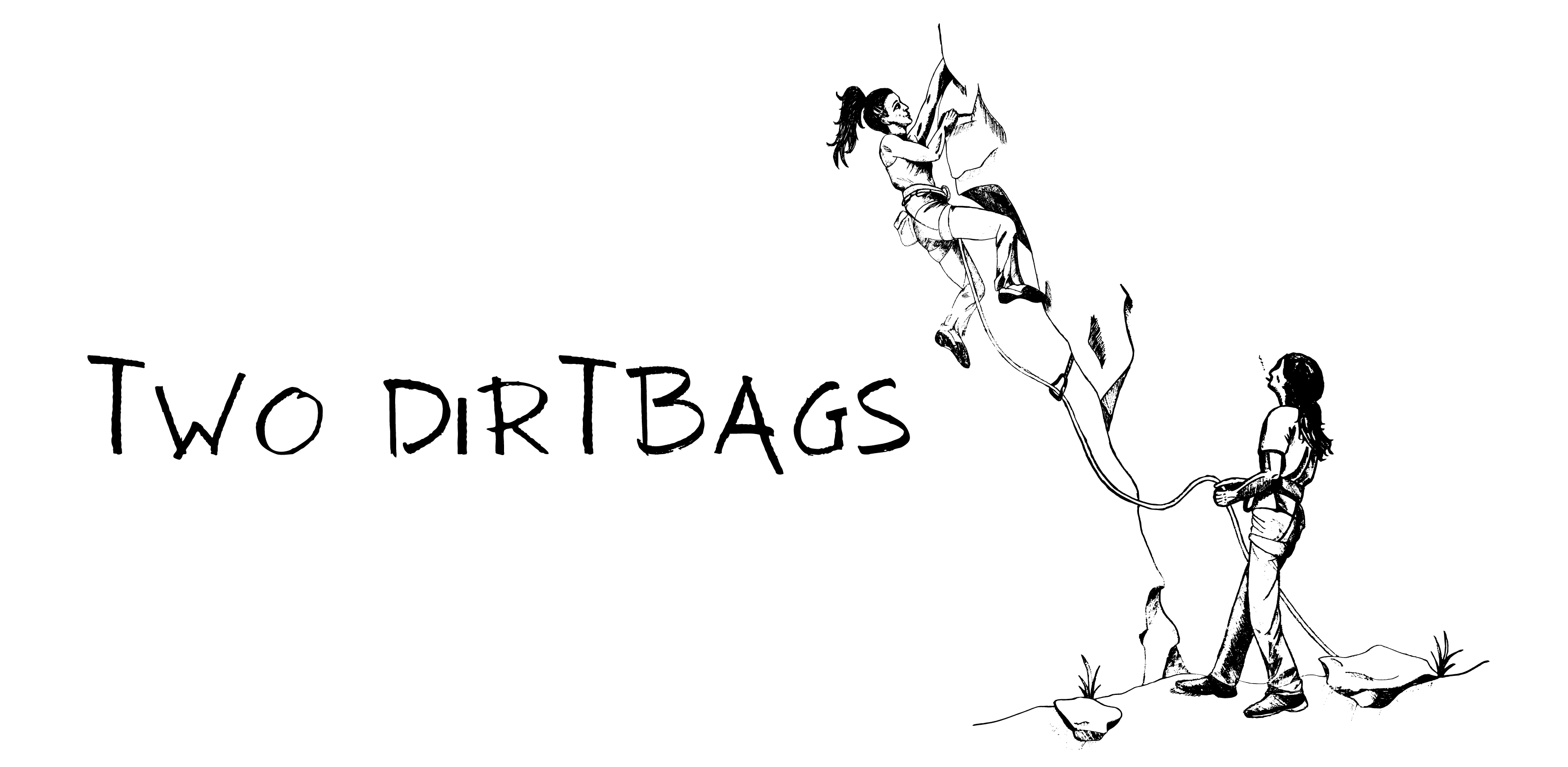
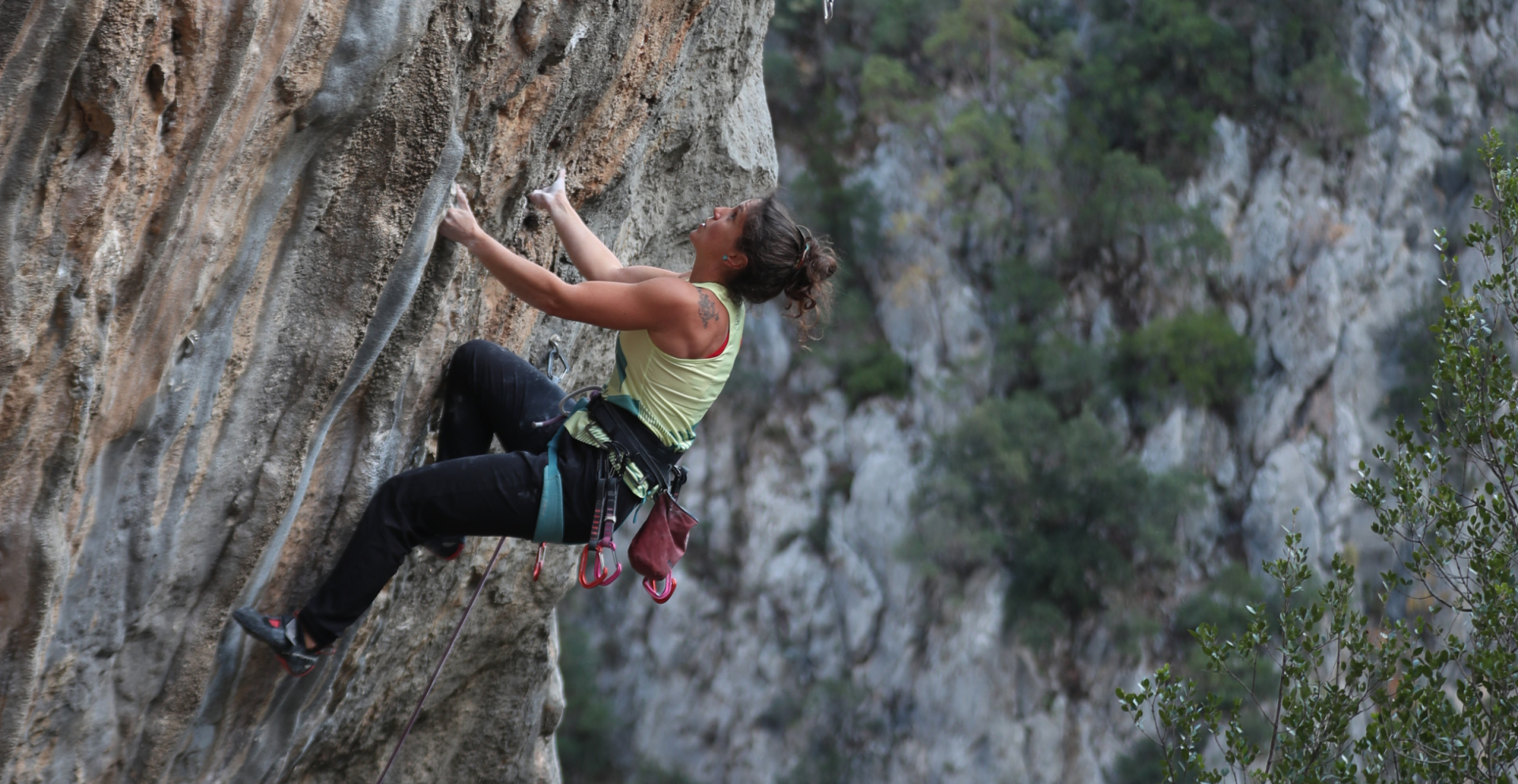
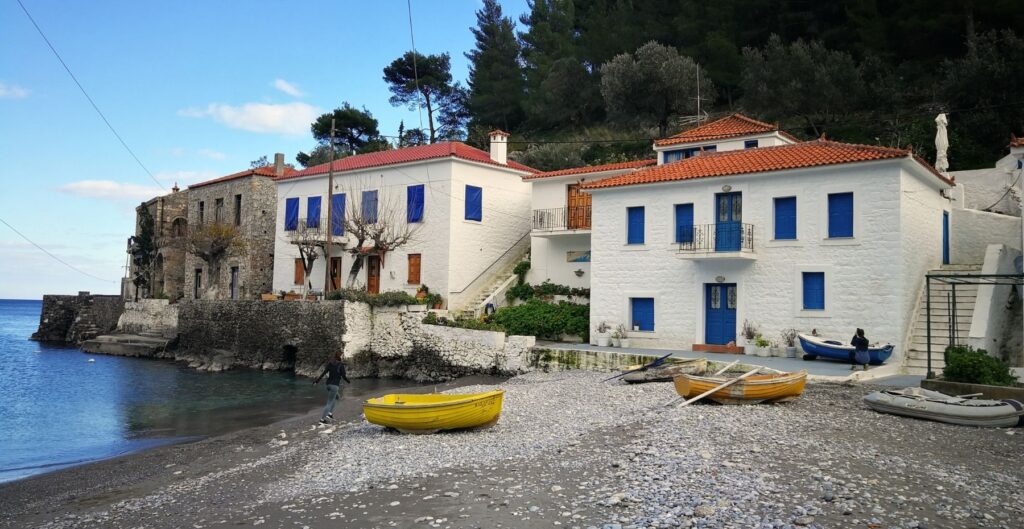
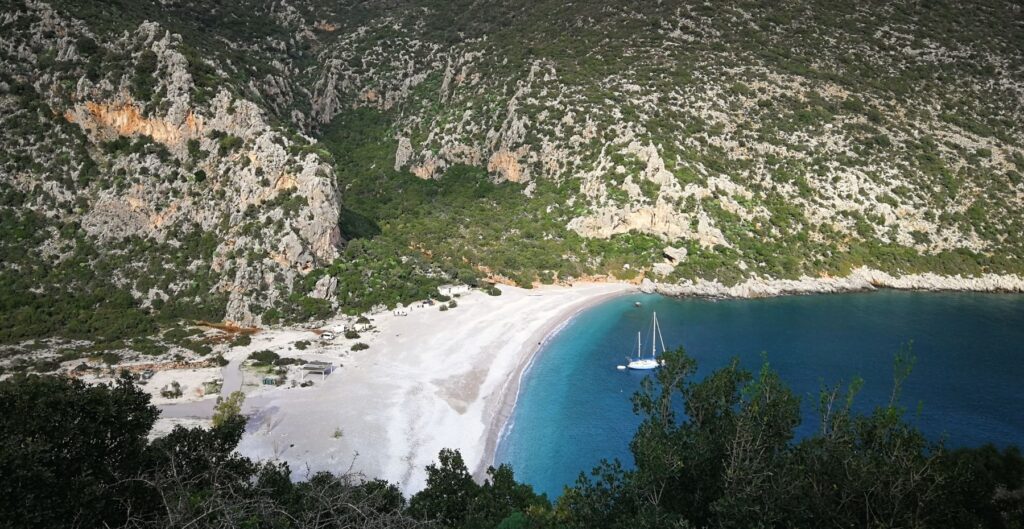
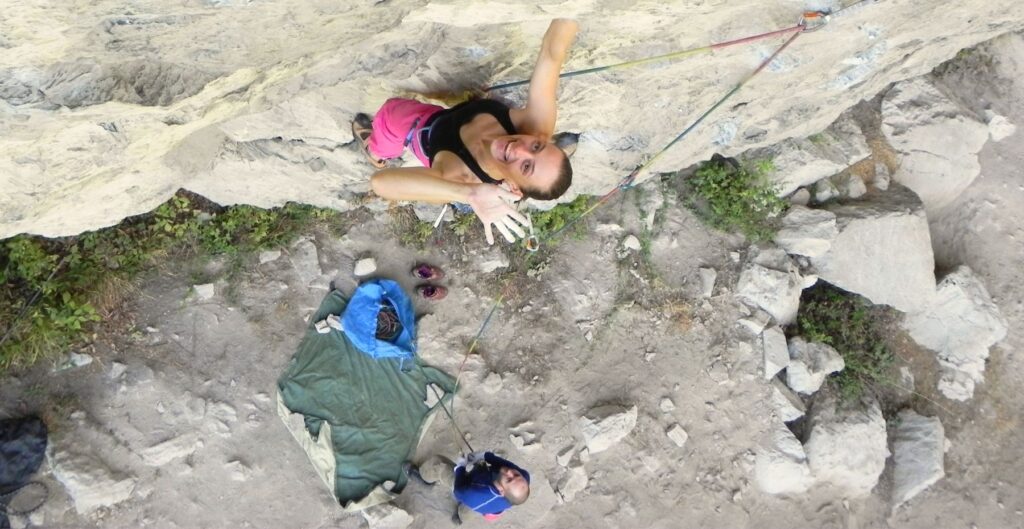
Pingback: The Underdogs: My Favorite Climbing Destinations in Romania - Two Dirtbags